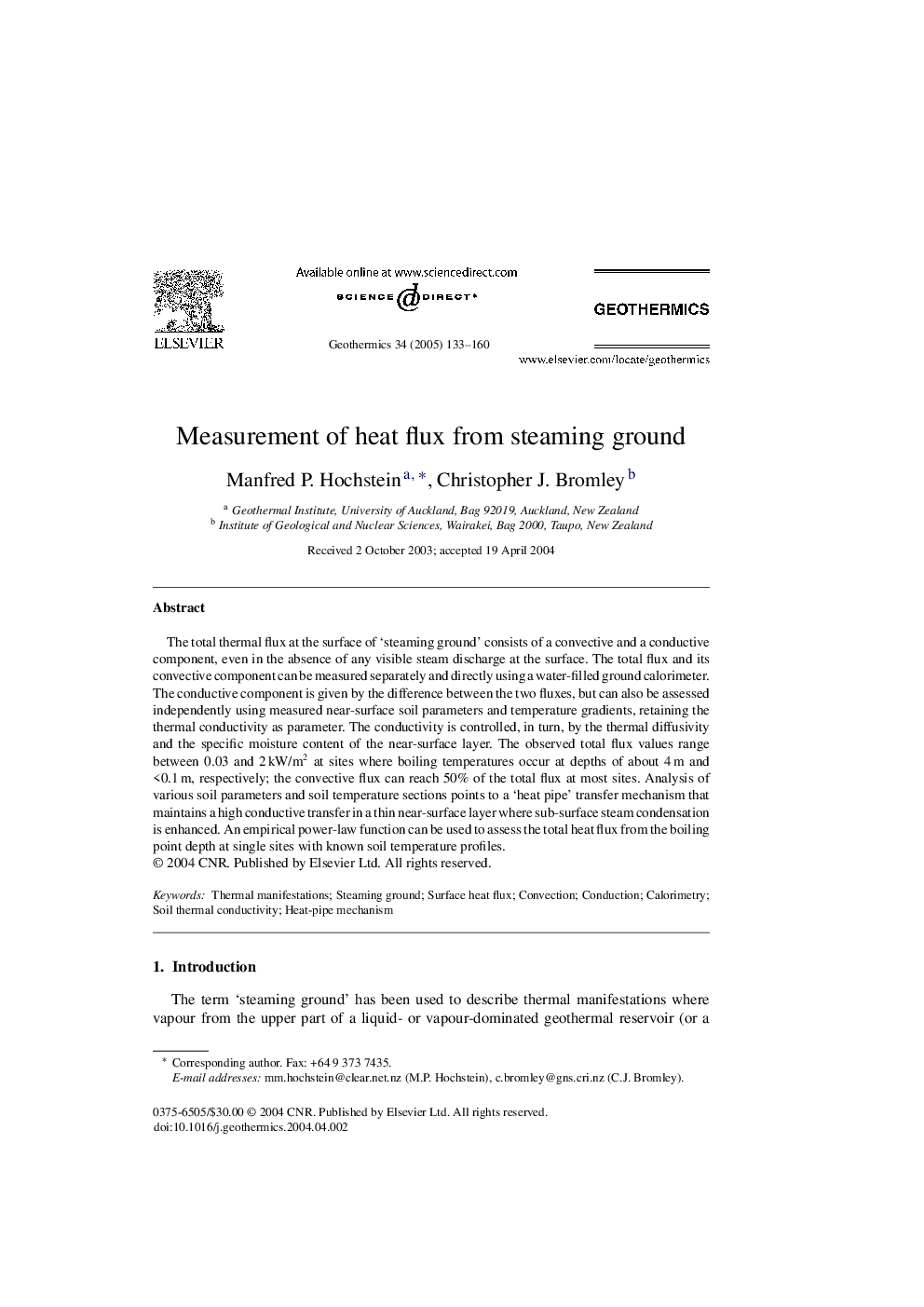| Article ID | Journal | Published Year | Pages | File Type |
|---|---|---|---|---|
| 10687589 | Geothermics | 2005 | 28 Pages |
Abstract
The total thermal flux at the surface of 'steaming ground' consists of a convective and a conductive component, even in the absence of any visible steam discharge at the surface. The total flux and its convective component can be measured separately and directly using a water-filled ground calorimeter. The conductive component is given by the difference between the two fluxes, but can also be assessed independently using measured near-surface soil parameters and temperature gradients, retaining the thermal conductivity as parameter. The conductivity is controlled, in turn, by the thermal diffusivity and the specific moisture content of the near-surface layer. The observed total flux values range between 0.03 and 2Â kW/m2 at sites where boiling temperatures occur at depths of about 4Â m and <0.1Â m, respectively; the convective flux can reach 50% of the total flux at most sites. Analysis of various soil parameters and soil temperature sections points to a 'heat pipe' transfer mechanism that maintains a high conductive transfer in a thin near-surface layer where sub-surface steam condensation is enhanced. An empirical power-law function can be used to assess the total heat flux from the boiling point depth at single sites with known soil temperature profiles.
Related Topics
Physical Sciences and Engineering
Earth and Planetary Sciences
Geochemistry and Petrology
Authors
Manfred P. Hochstein, Christopher J. Bromley,
